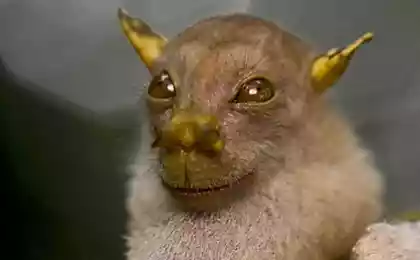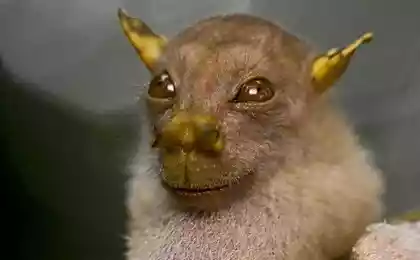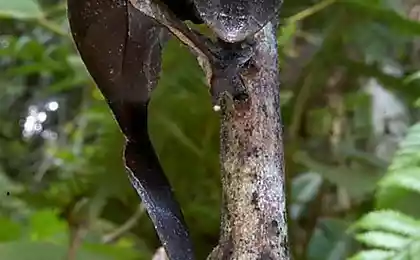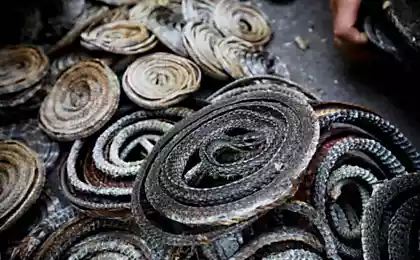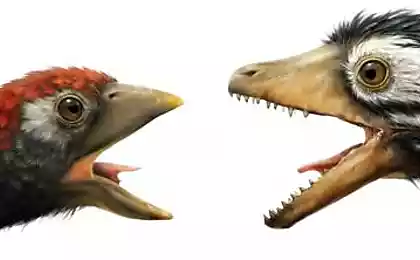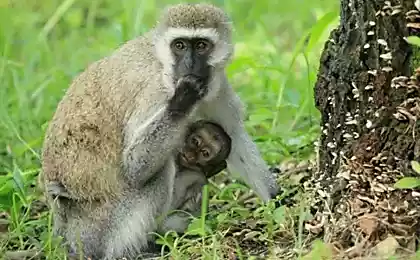861
20 of the most unusual animals according to PBO
The International Organization for Wildlife Conservation conducted a study titled "Rapid Assessment Program" around the world since 1990. To mark the 20th anniversary, the organization was rated "Top 20" species, which were found during expeditions TSP.
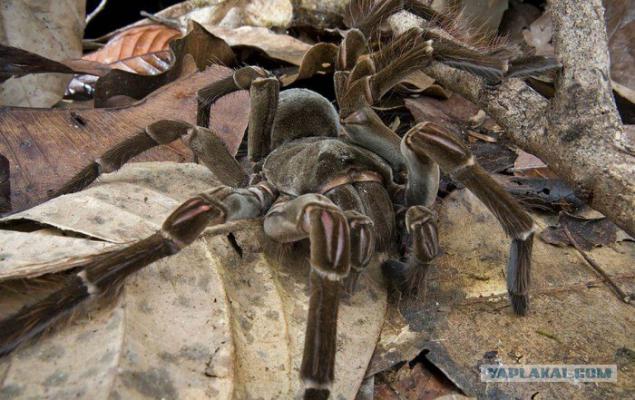
1. The picture shows a sheet-devil gecko, which was seen during the study in Madagascar in 1998. This species was first described in 1888, and is a common inhabitant of the virgin forests of Madagascar. In 2004, the World Wildlife Fund has brought all the leaf gecko in the list of "Most exterminated" because they "caught and sold in large quantities."
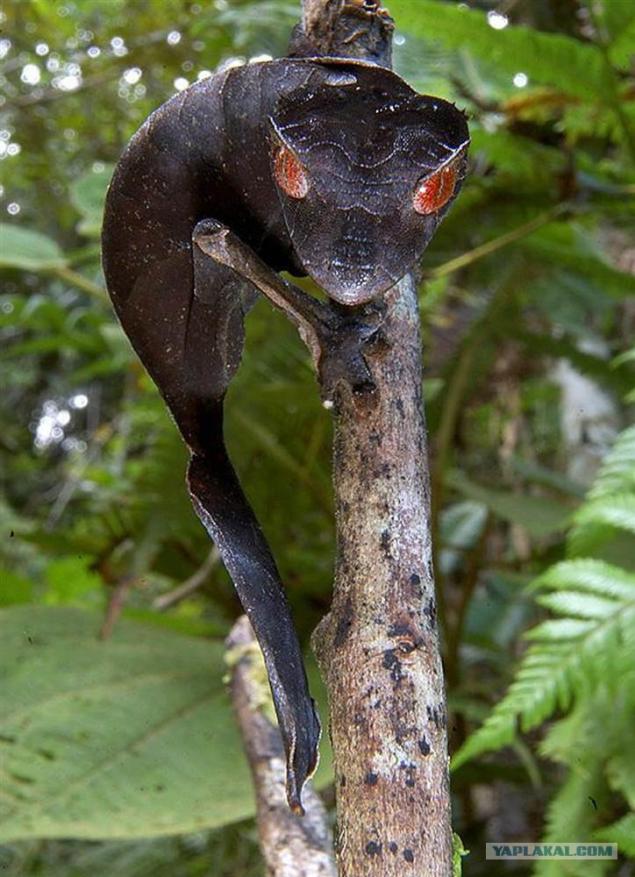
2. The alien visitor.
This "salamander-alien 'was found during an expedition to the PBO Ecuador in 2009. This type of salamander has webbed feet that help them climb trees in the rainforest. They also have the lungs. This new species was found in tropical rain forests in the south of Ecuador.
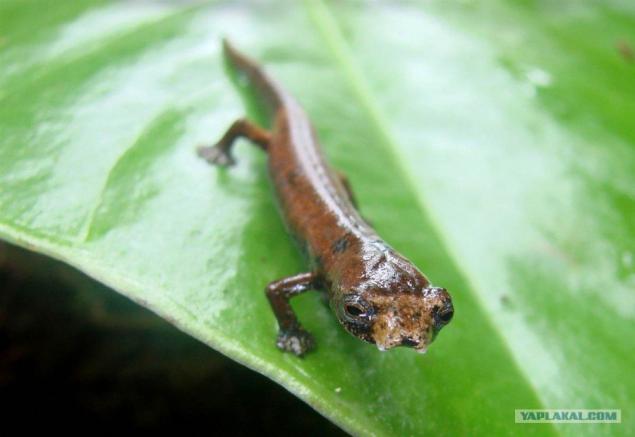
3. Toad Pinocchio.
This frog was discovered in 2008 during an expedition to the mountains of the TSP Foya, who are in the Indonesian province of Papua. This frog has a long, like Pinocchio, the projection on the nose, which is raised up when the male looking for a female, or down, when it is less active. His discovery was a fluke: herpetologist Paul Oliver spotted him sitting on a bag of rice in the campsite.
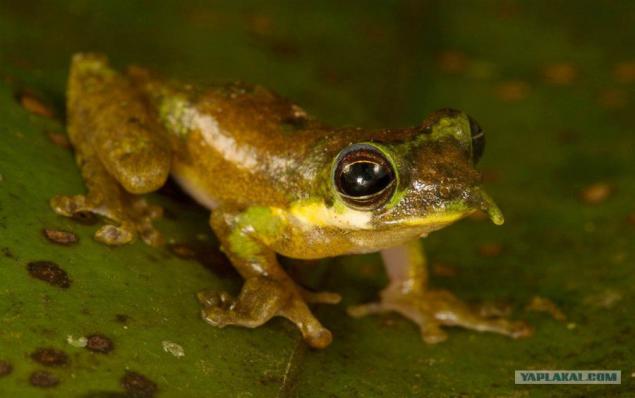
4. What big eyes!
This tree frog with big eyes, long, 6 inches, was found near a mountain river during an expedition on the mountain wilderness PAB Papua - New Guinea in 2008. It belongs to a group of frogs with an unusual pattern on venopodobnym centuries.
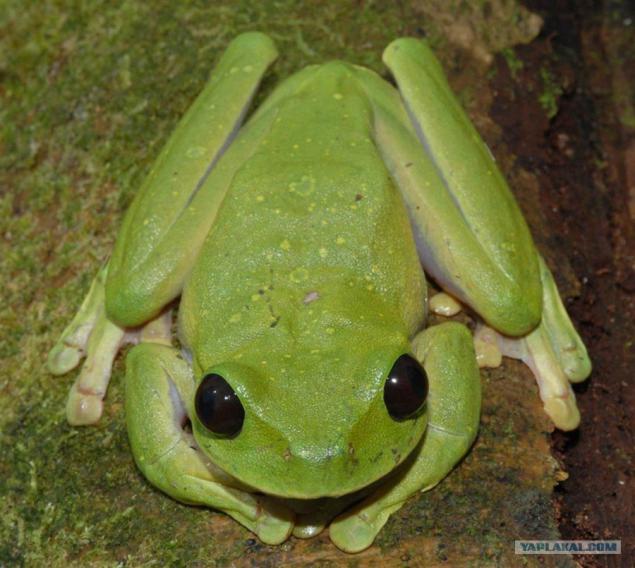
5. Legacy of the Incas.
Shinshillopodobnaya wood rat was discovered in 1997 during an expedition to the PBO ridge Vilkabama in Peru, which is in close proximity to the famous ruins of Machu Picchu. This animal is a pale gray color has a stocky build, has long claws and has a white stripe along the head.
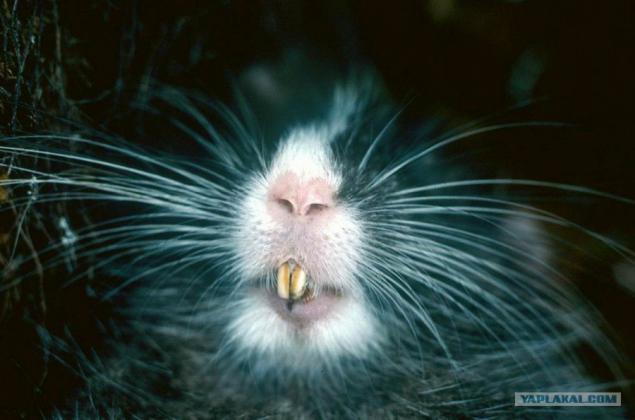
6. Fruit bat with tubopodobnym nose.
At this fruit bat with trubopodobnym nose, a native of Mueller mountain range in Papua - New Guinea, yet it has no name, but it has also been seen in other parts of New Guinea. This bat was discovered in 1999 by researchers of the TSP.

8 Members: Zeratul, StevenTowelie, Gokudera, bentleydream, All73, Ingenieur, GOOMER, Corvett became even worse
7. Smoky medosos.
This new kind of smoky medososa was discovered in 2005 during an expedition to the mountains of the TSP Foya in the Indonesian province on the island of New Guinea.
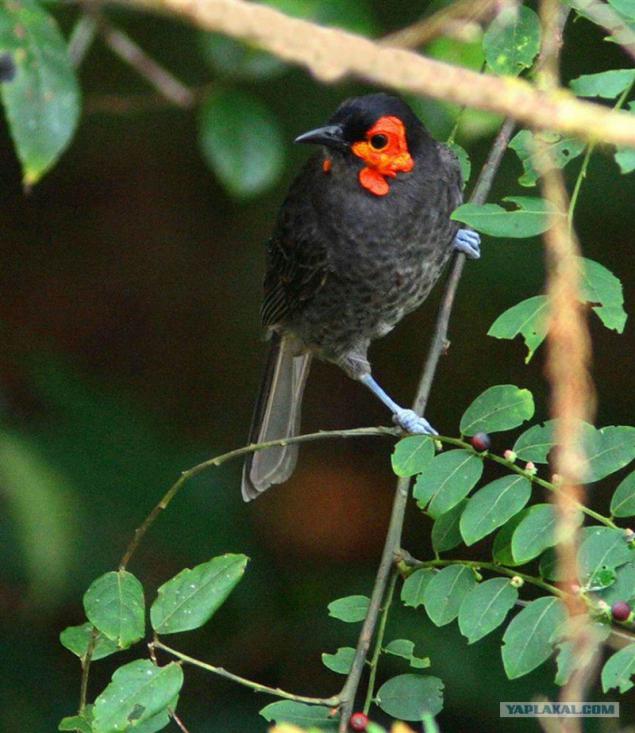
8. African traveler.
This species of birds found in the forests of the south-east of Guinea during the study of the TSP in 2003. Previously, this type was observed in the eastern part of Sierra Leone, Liberia and western Côte d'Ivoire.
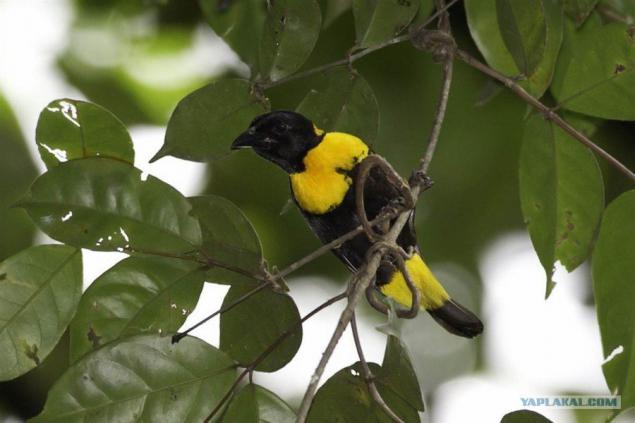
9. Walking shark.
Walking shark was discovered during an expedition to the PBO Indonesian Kanderavash Bay in 2006. Despite its name, this shark can swim. But she prefers to go on a gently sloping reef with their fins and eat shrimp, crabs, snails and small fish.
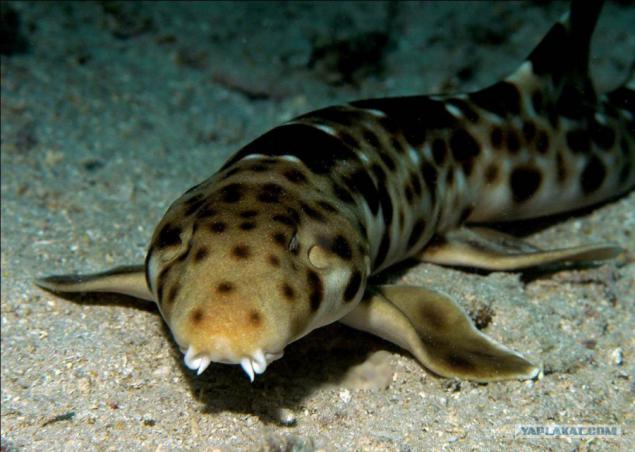
10. What color!
This flashing wrasse was discovered during an expedition in 2006 to the western part of Papua, Indonesia. Males go through an amazing courtship ritual in which they light electrical pulses of different colors in the form of swimming by females.
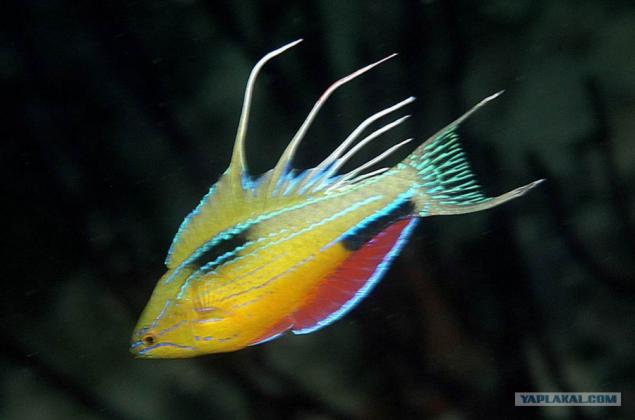
11. The sponge-like catfish.
This type of catfish was discovered during an expedition of the TSP in Suriname in 2005. Flat fish mouth allows it to attach to other fish and thus go in their direction.
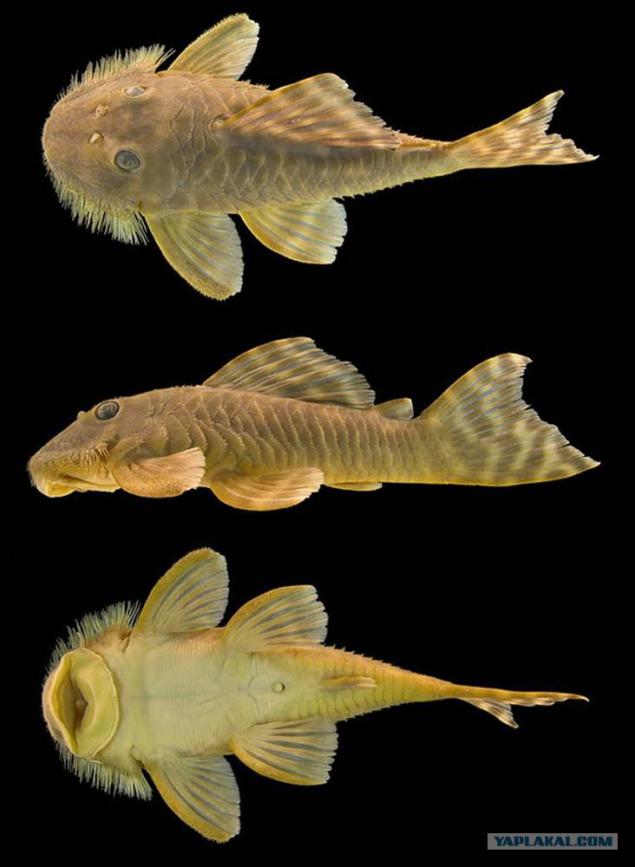
12. Crafty grasshopper.
This pavlinopodobny grasshopper was discovered during an expedition in 2006 in the mountains of Guyana Akarana. This is a great insect of tropical forest uses two effective strategies to protect itself: first, it looks like a fallen leaf, and if he is in danger, it raises a pair of wings with a pattern in the form of the eyes and begins to jump so that his opponent took his head of a giant bird.
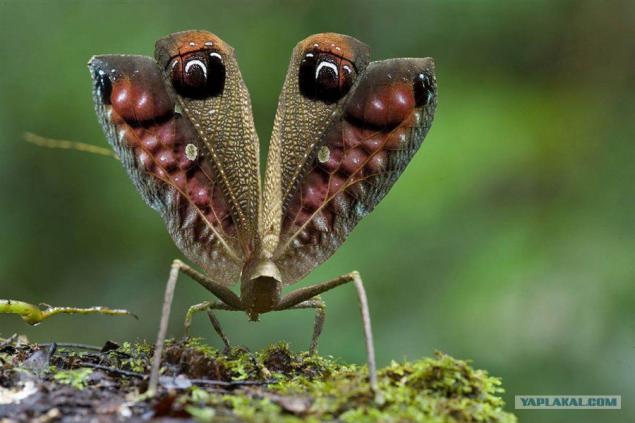
13. Meet, is the TSP.
Grasshopper PBO was detected in a study in 2002 in Ghana and Guinea. It was named in honor of the TSP program, as living in the most dangerous habitat in West Africa, and the TSP program is designed to protect this species.
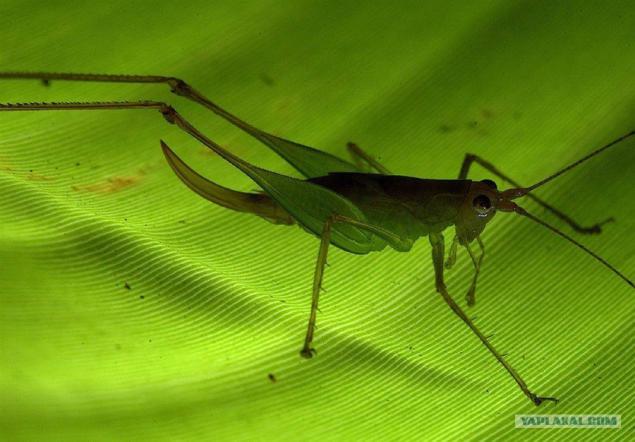
14. The debut of a dragonfly.
This new type of dragonfly was found during the investigation in the Democratic Republic of the Congo. Males of this species have a unique combination of colors, which distinguish it from other species, namely, yellow belly and red and white legs.
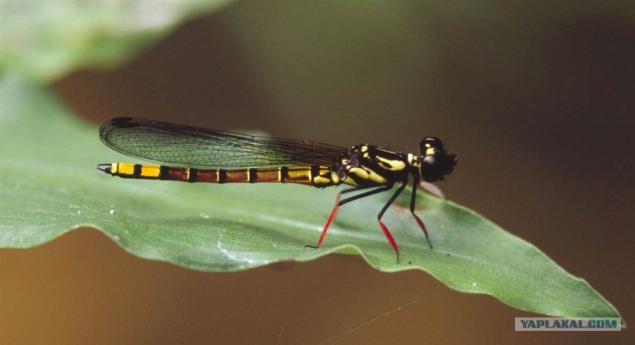
15. Cleaning bats.
This type of insect lives only in one cave ridge Simandoa, Guinea, where they were discovered in 2002. They feed on the guano of giant fruit bats that inhabit the cave.
(good that we have such)
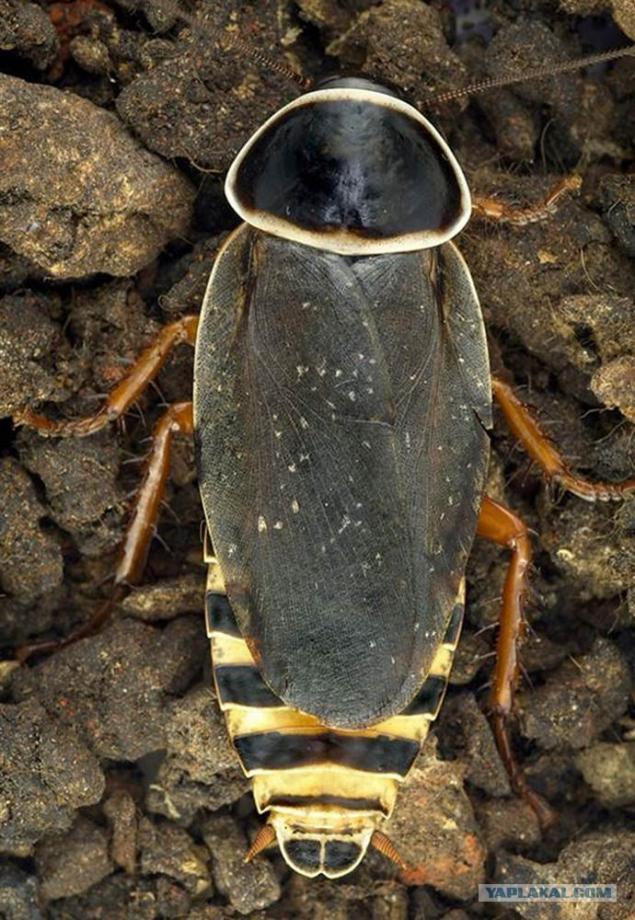
16. Ants with hooks.
Scientists, like all predators, mammals or birds, think twice before you approach the kryukopodobnomu ants that inhabit the forests of Cambodia. Curved legs ant kryukopodobnye easily dig into the skin. The ants were discovered during an expedition to Cambodia in a national park in 2007 Virashi.
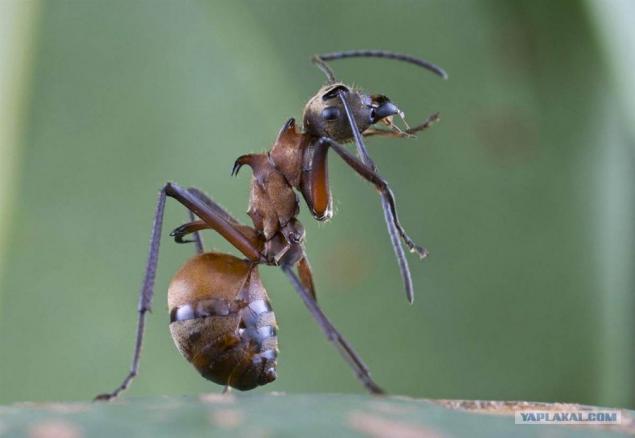
17. A tiny ant with a giant bite.
Tiger ant may not be as big as a tiger, but it is also fierce and dangerous for small invertebrate creatures caught in the leaf litter of the rainforest. It was found during an expedition to the PBO ridge Mueller in Papua - New Guinea in 2009.
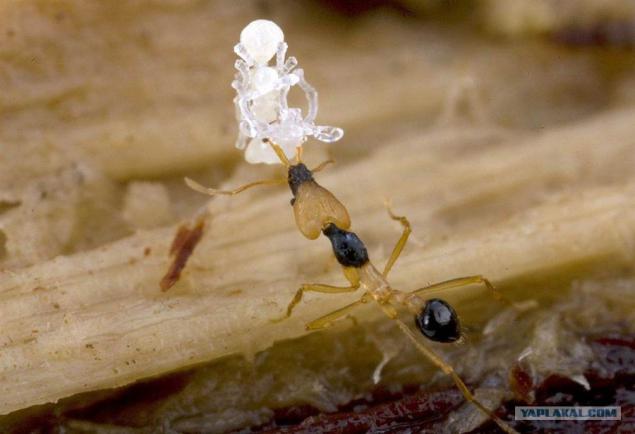
18. Scorpio unusual color.
This emperor scorpion 8 inches in length is one of the largest scorpions in the world. Some types of India only slightly longer. This scorpion was found during a 2006 study in Ghana. Despite its huge size, scorpions feed primarily on termites and other small invertebrates, but its venom is not particularly harmful to humans.
how happy they are small
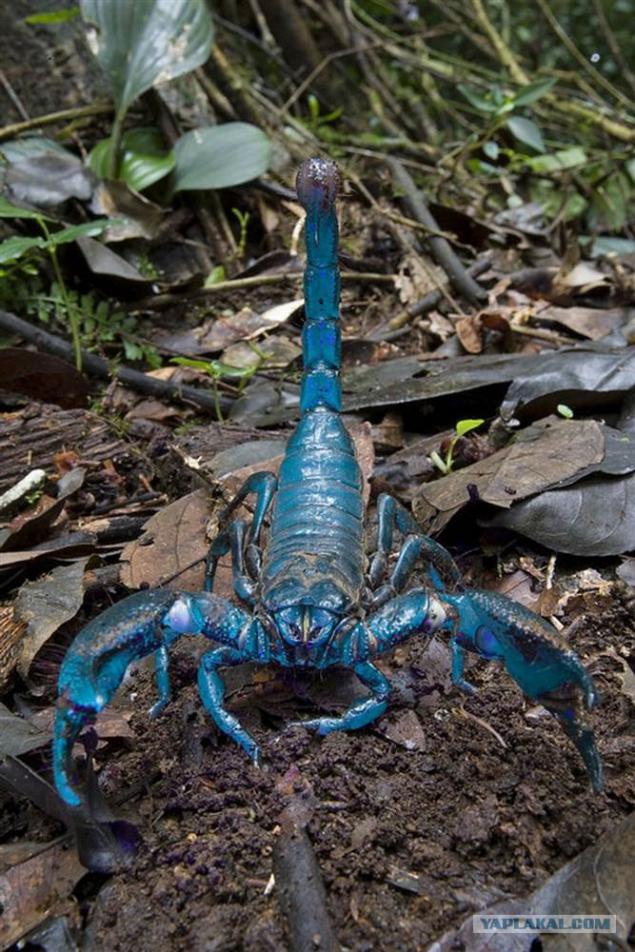
19. The most difficult in the world of the spider.
Goliath tarantula is a very massive spider in the world, weighing in at 6 ounces (170 grams). The sample research team discovered the TSP in 2006 in Guyana. Despite its name, they feed mainly on invertebrates, but also eat small mammals, lizards and even poisonous snakes.
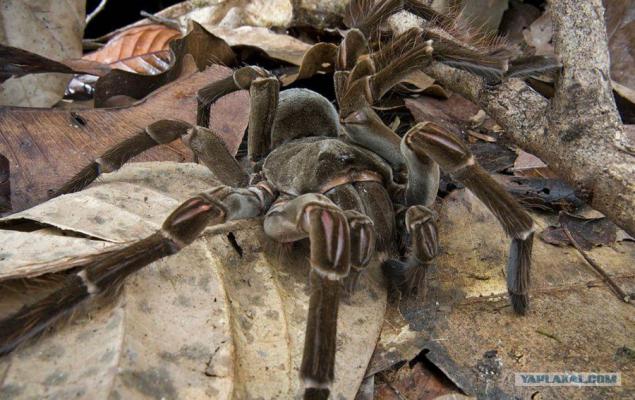
... 20. Old and new.
Prehistoric spider Ateva was discovered during an expedition in 2006 in Ghana Forest Reserve Ateva. This new species belongs to a number of animals that have not changed since prehistoric times. His age has more than 300 million years. They are now found only in Central and South America and West Africa.
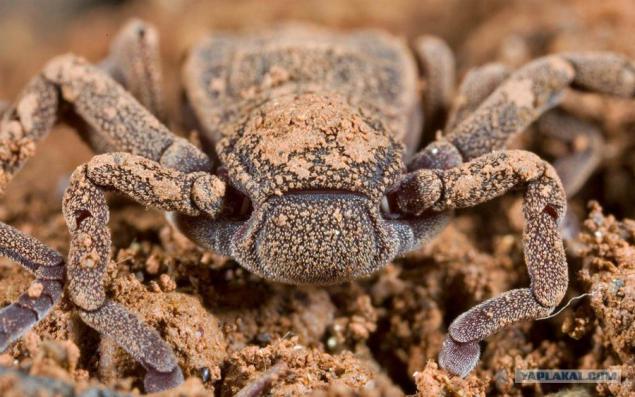
Source:

1. The picture shows a sheet-devil gecko, which was seen during the study in Madagascar in 1998. This species was first described in 1888, and is a common inhabitant of the virgin forests of Madagascar. In 2004, the World Wildlife Fund has brought all the leaf gecko in the list of "Most exterminated" because they "caught and sold in large quantities."

2. The alien visitor.
This "salamander-alien 'was found during an expedition to the PBO Ecuador in 2009. This type of salamander has webbed feet that help them climb trees in the rainforest. They also have the lungs. This new species was found in tropical rain forests in the south of Ecuador.

3. Toad Pinocchio.
This frog was discovered in 2008 during an expedition to the mountains of the TSP Foya, who are in the Indonesian province of Papua. This frog has a long, like Pinocchio, the projection on the nose, which is raised up when the male looking for a female, or down, when it is less active. His discovery was a fluke: herpetologist Paul Oliver spotted him sitting on a bag of rice in the campsite.

4. What big eyes!
This tree frog with big eyes, long, 6 inches, was found near a mountain river during an expedition on the mountain wilderness PAB Papua - New Guinea in 2008. It belongs to a group of frogs with an unusual pattern on venopodobnym centuries.

5. Legacy of the Incas.
Shinshillopodobnaya wood rat was discovered in 1997 during an expedition to the PBO ridge Vilkabama in Peru, which is in close proximity to the famous ruins of Machu Picchu. This animal is a pale gray color has a stocky build, has long claws and has a white stripe along the head.

6. Fruit bat with tubopodobnym nose.
At this fruit bat with trubopodobnym nose, a native of Mueller mountain range in Papua - New Guinea, yet it has no name, but it has also been seen in other parts of New Guinea. This bat was discovered in 1999 by researchers of the TSP.

8 Members: Zeratul, StevenTowelie, Gokudera, bentleydream, All73, Ingenieur, GOOMER, Corvett became even worse
7. Smoky medosos.
This new kind of smoky medososa was discovered in 2005 during an expedition to the mountains of the TSP Foya in the Indonesian province on the island of New Guinea.

8. African traveler.
This species of birds found in the forests of the south-east of Guinea during the study of the TSP in 2003. Previously, this type was observed in the eastern part of Sierra Leone, Liberia and western Côte d'Ivoire.

9. Walking shark.
Walking shark was discovered during an expedition to the PBO Indonesian Kanderavash Bay in 2006. Despite its name, this shark can swim. But she prefers to go on a gently sloping reef with their fins and eat shrimp, crabs, snails and small fish.

10. What color!
This flashing wrasse was discovered during an expedition in 2006 to the western part of Papua, Indonesia. Males go through an amazing courtship ritual in which they light electrical pulses of different colors in the form of swimming by females.

11. The sponge-like catfish.
This type of catfish was discovered during an expedition of the TSP in Suriname in 2005. Flat fish mouth allows it to attach to other fish and thus go in their direction.

12. Crafty grasshopper.
This pavlinopodobny grasshopper was discovered during an expedition in 2006 in the mountains of Guyana Akarana. This is a great insect of tropical forest uses two effective strategies to protect itself: first, it looks like a fallen leaf, and if he is in danger, it raises a pair of wings with a pattern in the form of the eyes and begins to jump so that his opponent took his head of a giant bird.

13. Meet, is the TSP.
Grasshopper PBO was detected in a study in 2002 in Ghana and Guinea. It was named in honor of the TSP program, as living in the most dangerous habitat in West Africa, and the TSP program is designed to protect this species.

14. The debut of a dragonfly.
This new type of dragonfly was found during the investigation in the Democratic Republic of the Congo. Males of this species have a unique combination of colors, which distinguish it from other species, namely, yellow belly and red and white legs.

15. Cleaning bats.
This type of insect lives only in one cave ridge Simandoa, Guinea, where they were discovered in 2002. They feed on the guano of giant fruit bats that inhabit the cave.
(good that we have such)

16. Ants with hooks.
Scientists, like all predators, mammals or birds, think twice before you approach the kryukopodobnomu ants that inhabit the forests of Cambodia. Curved legs ant kryukopodobnye easily dig into the skin. The ants were discovered during an expedition to Cambodia in a national park in 2007 Virashi.

17. A tiny ant with a giant bite.
Tiger ant may not be as big as a tiger, but it is also fierce and dangerous for small invertebrate creatures caught in the leaf litter of the rainforest. It was found during an expedition to the PBO ridge Mueller in Papua - New Guinea in 2009.

18. Scorpio unusual color.
This emperor scorpion 8 inches in length is one of the largest scorpions in the world. Some types of India only slightly longer. This scorpion was found during a 2006 study in Ghana. Despite its huge size, scorpions feed primarily on termites and other small invertebrates, but its venom is not particularly harmful to humans.
how happy they are small

19. The most difficult in the world of the spider.
Goliath tarantula is a very massive spider in the world, weighing in at 6 ounces (170 grams). The sample research team discovered the TSP in 2006 in Guyana. Despite its name, they feed mainly on invertebrates, but also eat small mammals, lizards and even poisonous snakes.

... 20. Old and new.
Prehistoric spider Ateva was discovered during an expedition in 2006 in Ghana Forest Reserve Ateva. This new species belongs to a number of animals that have not changed since prehistoric times. His age has more than 300 million years. They are now found only in Central and South America and West Africa.

Source:
